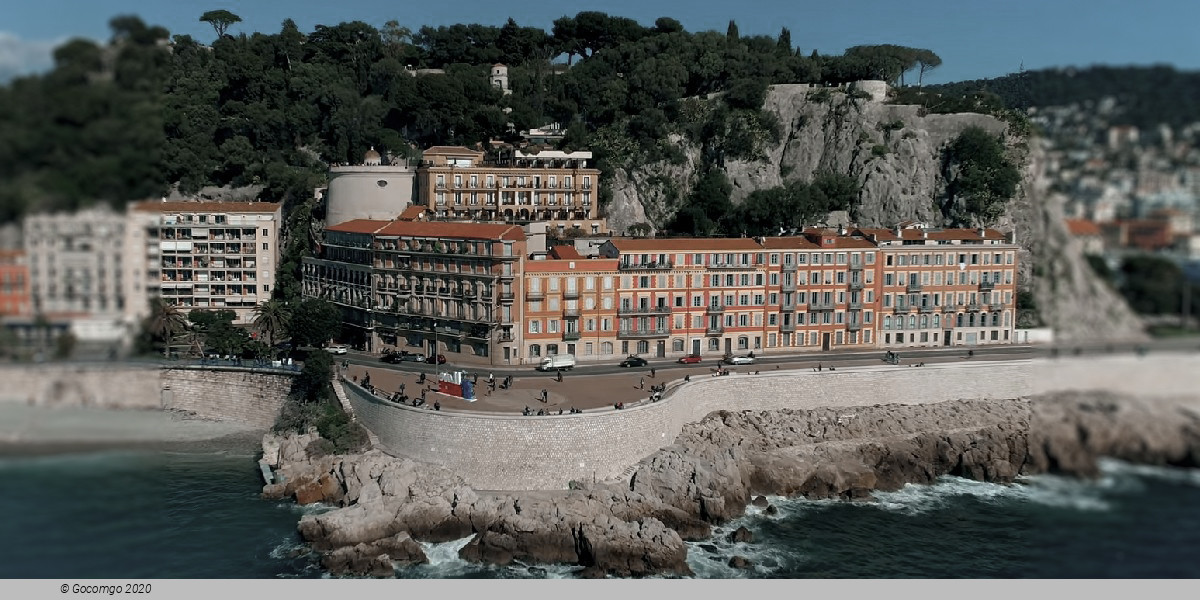Nice

Nice is the seventh most populous urban area in France and the capital of the Alpes-Maritimes department. The city is nicknamed Nice la Belle (Nissa La Bella in Niçard), which means Nice the Beautiful, which is also the title of the unofficial anthem of Nice, written by Menica Rondelly in 1912. The area of today's Nice contains Terra Amata, an archaeological site which displays evidence of a very early use of fire. Around 350 BC, Greeks of Marseille founded a permanent settlement and called it Nikaia, after Nike, the goddess of victory. Through the ages, the town has changed hands many times. Its strategic location and port significantly contributed to its maritime strength. For centuries it was a dominion of Savoy, and was then part of France between 1792 and 1815, when it was returned to the Kingdom of Piedmont-Sardinia until its re-annexation by France in 1860.
Terra-Amata, an archaeological site dating from the Lower Palaeolithic age, is situated near Nice. Nice itself was established by the ancient Greeks. There was also an independent Roman city, Cemenelum, near Nice, where the hill of Cimiez is located. It is an archaeological site with treasures, of which only a small part has been excavated. The excavated site includes thermal baths, arenas and Roman road.
Since the 2nd century AD, the light of the city has attracted painters and sculptors such as Chagall, Matisse, Niki de Saint Phalle, Klein, Arman and Sosno. Nice inspired many composers and intellectuals in different countries e.g. Berlioz, Rossini, Nietzsche, etc.
Nice also has numerous museums of all kinds: Musée Marc Chagall, Musée Matisse (arenas of Cimiez containing Roman ruins), Musée des Beaux-Arts, Musée international d'Art naïf Anatole Jakovsky, Musée Terra-Amata, Museum of Asian Art, Musée d'art moderne et d'art contemporain which devotes much space to the well-known École of Nice ”), Museum of Natural History, Musée Masséna, Naval Museum and Galerie des Ponchettes.
Being a vacation resort, Nice hosts many festivals throughout the year, such as the Nice Carnival and the Nice Jazz Festival.
Nice has a distinct culture due to its unique history. The local language Niçard (Nissart) is an Occitan dialect (but some Italian scholars argue that it is a Ligurian dialect). It is still spoken by a substantial minority. Strong Italian and (to a lesser extent) Corsican influences make it more intelligible to speakers of Italian than to other extant Provençal dialects.
In the past, Nice welcomed many immigrants from Italy (who continue to make up a large proportion of the population), as well as Spanish and Portuguese immigrants. However, in the past few decades immigration has been opened to include immigrants from all over the world, particularly those from former Northern and Western African colonies, as well as southeast Asia. Traditions are still alive, especially in folk music and dances, including the farandole – an open-chain community dance.
Since 1860 a cannon (based at the Château east of Old Nice) is shot at twelve o'clock sharp. The detonation can be heard almost all over the city. This tradition goes back to Sir Thomas Coventry, who intended to remind the citizens of having lunch on time.

